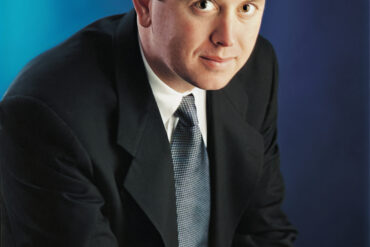America’s overlooked indulgence
By Matthew DeBord
HQ 49 | AUTUMN 2003
It’s rare to find anybody who out-and-out doesn’t like Champagne. You might not feel passionately about the bubbly, but chances are pretty good that, if you like to have fun with your wine, you won’t turn down a flute. Which is understandable, since Champagne is among the greatest beverages ever created. And I do mean created, by human hands. Wine will happen on its own: grapes grow and ripen, then fall to the ground and in time spontaneously ferment due to the action of natural yeasts. Champagne, on the other hand, requires an elaborate method to bring it forth.
By legend, Champagne was “discovered” in the 17th century by French monks, who noticed that wines would sometimes start to ferment again in bottles — the famous Dom Perignon was the monk credited with the find. This “secondary fermentation” was deemed a little miracle, but it took a long time. Enter “methode traditionnelle,” invented by Madame Clicquot in the early 1800s. This technique greatly quickened the transition. Long story short: one or a combination of three grape varieties — Chardonnay, Pinot Noir and Pinot Meunier — is made into what would otherwise be a fairly lousy wine, then bottled, but not before receiving a hit of sugar and yeast. This combination kicks off a swift secondary fermentation in the bottle, with carbon dioxide as a by-product. Poof! Bubbles!
There is, however, a problem, as the base wine throws off yeasty gunk, called “lees,” during secondary fermentation. This adds flavor but makes the wine cloudy. Methode traditionnelle fixes this by racking the bottles and periodically twisting, or “riddling” them — formerly by hand, but now largely by machine — over the course of several days, so that the sediment ends up in the bottles’ necks. This part is then quickly frozen, the bottle is uncapped (they’re sealed with regular old bottlecaps at this juncture) and pressure forces the nugget of sediment out. The resulting effervescent product can then be distinctively corked (with the wire cage), labeled and sold worldwide.
Some people are under the impression that Champagne is a luxury beverage. But truth be told, you can regularly enjoy Champagne without squandering your kid’s college fund. And, when it comes time for a big celebration, you can shoot the moon and buy a bottle of something famous and pricey, like Dom Perignon. Ultimately, it’s all a matter of your quest for prestige, because there really is no such thing as bad Champagne, just levels of betterness. And unlike more complicated quaffs, there’s only one essential piece of Champagne knowledge. All you need to know is that it comes in two basic forms, vintage and nonvintage. Nonvintage is blended from different years and is cheaper; vintage carries a date, can be blended only from the wine produced that year, and is more expensive. Beyond vintage, there is a super-category, prestige cuvée. These can be real budget-busters. For example, Krug Clos du Mesnil 1986 goes for $400 in big-city restaurants. But that’s a mere slice of the Champagne market. Mumm Cordon Rouge, by contrast, can be had for under a hundred. There are numerous Champagnes that sell for under $40.
Champagne can also be satisfyingly imbibed with just about anything short of a blood-rare t-bone — and at any time of day or night. As pleasurable as it is to sip in conjunction with wedding cake or as the ball drops in Times Square on New Year’s Eve, it shouldn’t be overlooked when everyone in your dinner party is eating something different. Because Champagne gracefully combines fruitiness with acidity, its food-friendly aspect is rarely in doubt.
But please don’t unflute the revered concoction. Champagne is designed to generate two visual raptures: the delicate foamy mousse; and the gravity-defying stream of bubbles (often referred to as the “bead”). What you require is a true, colorless flute, preferably one with a gentle curve, not uniform sides. Never pour to the rim. Always swirl and sniff before sipping.
And what about opening the bottle? Well, loud pops should be reserved for NBA locker rooms. The best technique involves grasping the chilled bottle and gradually twisting it, while holding the cork stationary with a towel. What you’re after is a subtle burp, followed by a faint mist from the bottle, rather than a boisterous explosion, much less target practice with the thumbed-free cork.
All right, what should it taste like? This varies widely from house to house and producer to producer. Because Champagne grapes are grown in France’s most marginal viticultural area, the base wines tend to be crisp rather than robust, so the majority of basic brut Champagne leans toward refreshing rather than mouth-filling. Remember, Champagne is Champagne — and only Champagne. A sparkling wine from anywhere else in the world can’t use the name.
Champagne’s flavors can be incredibly broad. There are yeasty ones (think: pie dough) in more full-bodied examples, a result of spending more time “on the lees” during secondary fermentation. Leaner-and-meaner citrus notes show up in Champagnes that go for a sleek, sophisticated style. Toasty flavors can sometimes appear. Red berry, spice, nut, vanilla and pepper tones can also emerge, depending on the grapes involved. In some cases, you can even find bitter flavors, or flavors that might make you think of herbs.
However, you won’t find much diversity from Champagne house to Champagne house. The goal of the big Champagne producers is to deliver a consistent product, year after year. This is why they blend wines from different vintages. Oddly enough, good Champagne is a lot like beer, in this respect. The goal of the brewer is to make his suds taste the same, regardless of where and when they were bottled.
Champagne is easy to find. There are plenty of other French wines that will never reach the stores in and around Huntington, but Champagne isn’t among them. Your best bet would be a stop at either the Corner Depot at 105 Eighth Avenue or LaFonatine’s at 418 10th Street. Both stores have a good selection and helpful staff.
Some brands that are worth investigating are Moet & Chandon, Tattinger, Veuve Clicquot and Bollinger, as well as Dom Perignon and Mumm. You can spend a little or a lot. But regardless, you won’t be disappointed.





